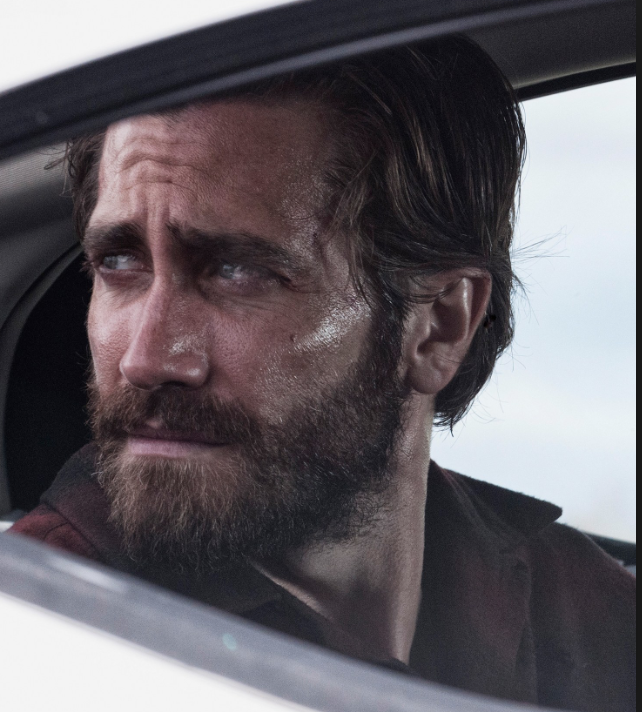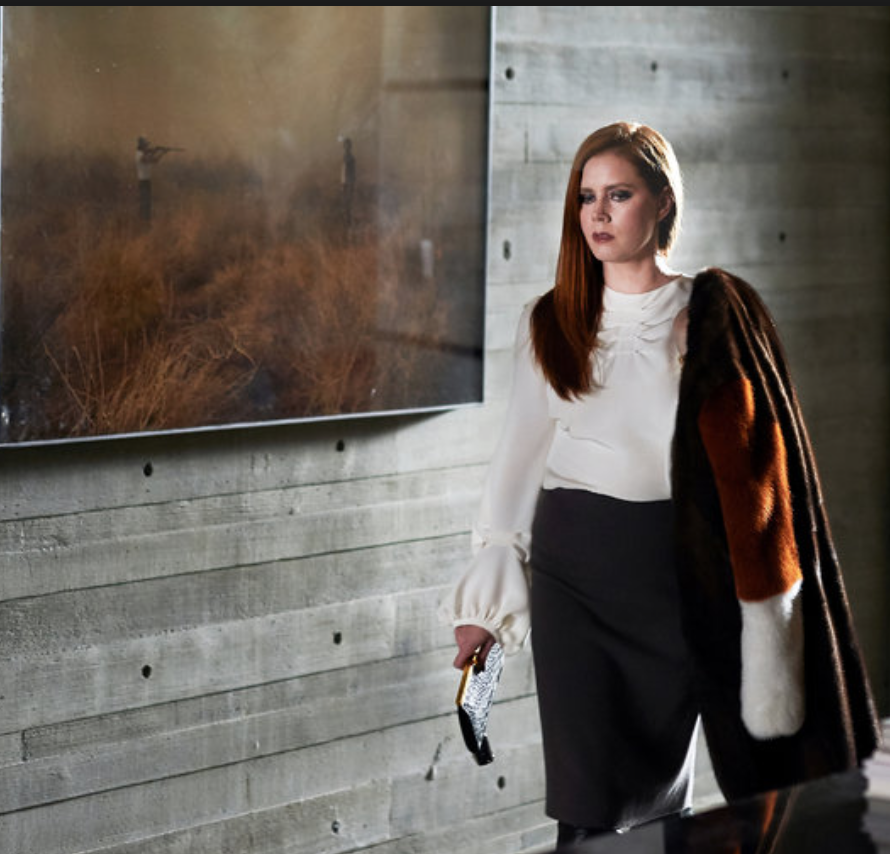 As a film director, Tom Ford is a great art director. By this I mean that, with the exception of “Bling” director Sofia Coppola, he is uniquely concerned with the surface of things. This is not surprising, for Ford has made his name as one of the premier fashion designers of his generation. But in his movies – “A Single Man” (2009) and now “Nocturnal Animals” – he expresses ambivalence about appearances, especially when it comes to keeping them.
As a film director, Tom Ford is a great art director. By this I mean that, with the exception of “Bling” director Sofia Coppola, he is uniquely concerned with the surface of things. This is not surprising, for Ford has made his name as one of the premier fashion designers of his generation. But in his movies – “A Single Man” (2009) and now “Nocturnal Animals” – he expresses ambivalence about appearances, especially when it comes to keeping them.
It’s also not surprising that both films are literary adaptations. You get the sense that Ford knows he’s best at fleshing out someone else’s content; form and function, baby. Starring Colin Firth, “A Single Man” is curated from Christopher Isherwood’s interior novel about the melancholy of a closeted professor, and Ford’s fascination with midcentury American style allows us to glean the depth of his protagonist’s depression; if these creamy colors and sharp angles aren’t going to make this man happy, nothing will. But based on Austin Wright’s 1993 novel, Tony and Susan, “Nocturnal Animals” is a tougher sell, mostly because the director amps up the book’s stakes – vamps them up, too – without locating its core. You could dismiss it as a stylish exercise, except that he’s chasing some messages that never deliver.
Amy Adams, who is having her best season since 2005’s “Junebug,” stars as Susan, a Los Angeles one-percenter whose art gallery is far more successful than her second marriage. With razored red locks and so much smoky makeup that you wonder where the fire is, she lives insomniacally in a glass house (aha!) dominated by a Jeff Koons balloon sculpture and conspicuously absent of husband Hutton (Armie Hammer, a cinematic shorthand for nefarious entitlement). She’s the sort of miserable beauty who wears her unhappiness beneath her big eyes like a life-sized Matryoshka, which is fitting because different narratives in “Nocturnal Animals” layer upon each other like those Russian nesting dolls.
One day Susan receives a manuscript from first husband Edward (Jake Gyllenhaal), a struggling writer she abandoned for the stability and prosperity of Hutton. As she reads his book – a thriller set in the sere, sore badlands of West Texas – we also enter its world. Tony (also Gyllenhaal), a professor traveling with his wife and daughter (Isla Fisher and Ellie Bamber, both pointedly resembling Adams), is forced off the highway by a dangerous trio of hooligans, and things go south from there. Taut and balletically choreographed, this sequence is the film’s most compelling, a marked contrast to the still lives Ford usually composes, except that his over emphasis on style remains intact. Though contemporary, these denim-clad bad guys are so sepia-toned and round-bottomed that they seem like they stepped out of a Western-themed 1950s porno. (Their dialogue follows suit.)
Rapt, Susan reads in her black, marble hot tub, which dissolves into a shot of a Pepto Bismol-pink motel tub where Tony cowers, awaiting news about his kidnapped family. A third storyline is introduced – a set of flashbacks to Edward and Susan’s marriage when they were young enough to challenge her affluent, cold-hearted clan. Gyllenhaal and Adams play both their fortysomething and twentysomething selves, and the special effects are pretty amazing; ditto for the visual Easter eggs that jump from plot to plot. (Twentysomething Edward drives the same car as Tony; a pair of fictional corpses on a sofa mirror their real-life equivalents sleeping in the next scene.) But the love story itself is woodenly by the book: girl meets boy, girl marries boy, girls sells out, boy pens thinly disguised revenge fantasy about girl’s demise.
What’s odd is that the story is not by this book. In Wright’s novel, Susan is far more ordinary – a middle-class, suburban woman who does her own housework and loves but does not like her three ratty kids. The rarified world that Film Susan occupies – her museum-like interiors, her enviably chic uniforms of emerald green velvet and leather corsets; her fabulously bejeweled and bewigged frenemies – is purely Ford’s fabrication. On one level, this have-and-have-not wrinkle works simply because it’s such a pleasure to behold. What better way to demonstrate Susan’s seduction from true love than to seduce us similarly? (“I want that dress,” hissed a woman behind me whenever Adams appeared in a new outfit; I nodded vigorously each time.) But a woman choosing luxury over love is one of cinema’s most regrettable clichés, no matter how glamorously packaged or meta the delivery system. Of all the “have your cake and eat it too” projects that Hollywood produces each year – action pics that condemn violence while bathing in bloodshed; you-go-girl rom-coms that reinforce hetero-normative roles – this one may be the highest in empty calories. It’s a good thing that it’s so good looking.
– her museum-like interiors, her enviably chic uniforms of emerald green velvet and leather corsets; her fabulously bejeweled and bewigged frenemies – is purely Ford’s fabrication. On one level, this have-and-have-not wrinkle works simply because it’s such a pleasure to behold. What better way to demonstrate Susan’s seduction from true love than to seduce us similarly? (“I want that dress,” hissed a woman behind me whenever Adams appeared in a new outfit; I nodded vigorously each time.) But a woman choosing luxury over love is one of cinema’s most regrettable clichés, no matter how glamorously packaged or meta the delivery system. Of all the “have your cake and eat it too” projects that Hollywood produces each year – action pics that condemn violence while bathing in bloodshed; you-go-girl rom-coms that reinforce hetero-normative roles – this one may be the highest in empty calories. It’s a good thing that it’s so good looking.
This was originally published on Signature.
